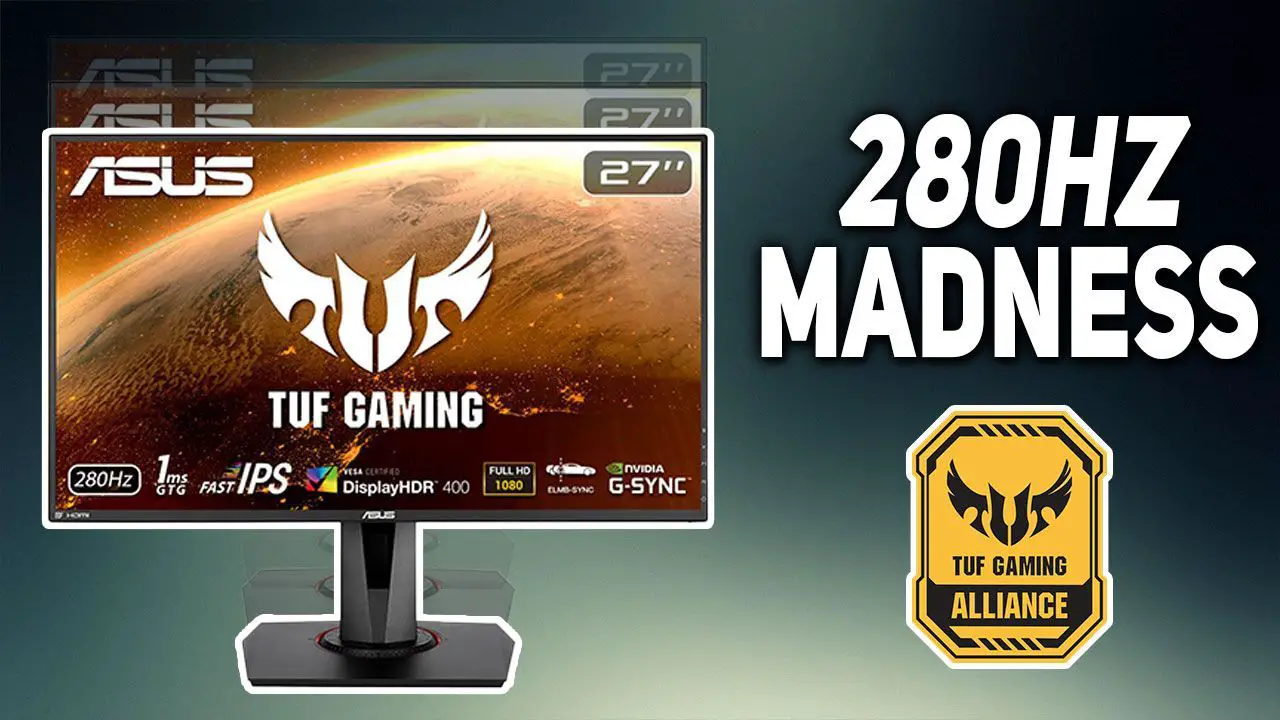The VG279QM and its ELMB-sync technology combined with VRR at a blistering 280 frame per second offer impressive gaming immersion. Immersion where buyers will now have the luxury of no longer being forced to choose between VRR and motion blur reduction. Instead, the VG279QM offers the potential of using both… at the same time.
Equally important is while this certainly is not the first monitor we have come across with blur reduction abilities, it is the first that actually works almost as well as the marketing department’s promises. With typical backlight strobing, perceived clarity can indeed be sometimes enhanced… but usually at the expense of gaming immersion – and potentially even headaches from the strobe effect. This strobe effect usually is noticeable and is especially true when used in darkened environments. This is why it usually is the first thing we turn of… as – for us – Variable Refresh Rate tech trumps U/ELMB. Especially when talking about 200+ frame rate capable monitors.
The VG279QM is not typical in this regard. Asus has mitigated many of the downsides we have come to associate with strobing based blur reduction. Not eliminated, but mitigated… as certain compromises had to be made in order to get this new shiny tech out the door for this generation without giving it an asking price so high only the uber-rich could afford one. The main one is that at lower (real world) fresh rates the strobe effect is still noticeable, especially in low ambient light conditions. Due to ASUS being overly aggressive in their algorithms, the occasional pre-ghosting artifact (that ironically enough only gets more common the further the actual frame rate diverges from the configured frame-rate) does mar an otherwise excellent showcase for ELMB-sync technology. The fact that ASUS has a massive gap between 144Hz and 240Hz ‘gears’ for NVIDIA users is the other compromise that does take a bit of shine off the VG279QM. Put bluntly, these are compromises you will have to live with if you want 280 FPS with blur reduction and VRR enabled without breaking the bank. Even with such large asterixis, it is a game-changer. One that as the tech matures will become a de-facto necessity on any monitor marketed towards the serious gaming enthusiast.
When you mix in the fact that while it may not be a 10-bit IPS based panel, and certainly is not color accurate out of the box, the VG279QM can easily be as good working with daily tasks (editing photographs in Photoshop, video editing in Premiere Pro, even documents and spreadsheets), as it is gaming. So, for those interested in more than just a ‘gaming’ monitor the VG279QM is surprisingly well rounded and sure to please… or at least sure to please buyers willing to live with 1080P resolution on a 27-inch monitor.
The same holds true for those with multiple monitor setups and want to add another monitor to the mix. The VG279QM comes with a stand that may not be overly fancy looking but offers very good abilities including 130mm of height adjustment, swivel, tilt, and even landscape to portrait rotation. Few will find it lacking, and those that do… probably already own a high end ‘multi-monitor’ stand and will be yanking the included standoff before even turning the VG279QM on for the first time.
As long as you can live with a 1080P instead of 1440P resolution, and have enough GPU horsepower to get as close to 280Hz as possible, the overall value of the Asus VG279QM is just too darn high to ignore. Doing so may just end up in talking yourself out of a rather good monitor. It is not perfect, but it is easily one of the better 1080P multi-role 27-inch monitors we have seen to date.

The Review
ASUS VG279QM
As long as you can live with a 1080P instead of 1440P resolution, and have enough GPU horsepower to get as close to 280Hz as possible, the overall value of the VG279QM is just too darn high to ignore. Doing so may just end up in talking yourself out of a rather good monitor. It is not perfect, but it is easily one of the better 1080P multi-role 27-inch monitors we have seen to date.











